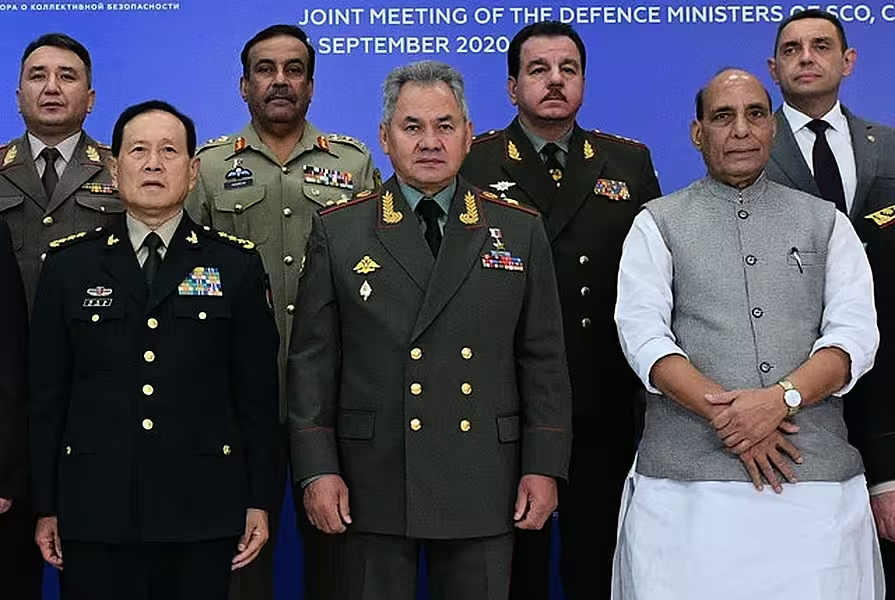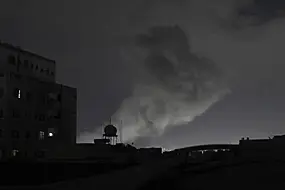China said Indian forces crossed into territory it holds along the border and fired warning shots at a Chinese patrol in what it called a violation of their agreements.
India denied that and said the Chinese soldiers tried to surround one of their forward posts in a “grave provocation”, and also fired warning shots.
China described it as the first exchange of fire between the countries in 45 years.

The nuclear-armed rivals have been engaged in a tense standoff in the cold-desert Ladakh region since May, and their defence ministers met on Friday in Moscow in the first high-level direct contact between the sides since the standoff began.
China’s western military command said the incursion occurred on Monday along the southern coast of Pangong Lake in the area known in Chinese as Shenpaoshan.
After shots were fired, Chinese forces took “necessary measures to stabilise and control the situation,” the command said, in the statement citing spokesman Zhang Shuili.
It demanded the Indian forces withdraw and investigate the move to open fire.
Chinese foreign ministry spokesman Zhao Lijian repeated that Indian troops were the first to shoot.
He said it was the first exchange of fire between the sides since 1975, despite the increasing tempo of recent clashes.
“We, the Chinese side, has been stressing repeatedly that the two sides should peacefully settle our differences through dialogue and consultation. Confrontation will not benefit either side,” Mr Zhao told reporters at a daily briefing.
Colonel Aman Anand, an Indian army spokesman, said China continues “provocative activities to escalate” tensions and called the Chinese military statement an attempt to mislead domestic and international audiences.

Col Anand said the Chinese soldiers tried to surround an Indian military post and fired a few shots in the air when the Indian soldiers “dissuaded” them.
He said Indian troops “exercised great restraint”.
Col Anand accused China’s military of “blatantly violating agreements and carrying out aggressive manoeuvres while engagement at military, diplomatic and political level is in progress”.
There was no word of casualties on either side.
Late last month, India said its soldiers thwarted the Chinese military’s moves to “change the status quo” in violation of a consensus reached in past efforts to settle the standoff.
The activities last month and on Monday were alleged to have occurred on the southern bank of Pangong Lake, a glacial lake divided by the de facto frontier and where the India-China face-off began in early May.
The standoff escalated to a nighttime clash on June 15 that was the deadliest conflict in 45 years between the nuclear-armed rivals.
According to Indian officials, Chinese troops atop a ridge at the mouth of the narrow Galwan Valley threw stones, punched and pushed Indian soldiers down the ridge at around 4,500 metres (15,000 feet).

India said 20 of its soldiers were killed, including a colonel. China did not report any casualties.
The disputed and undemarcated 2,175-mile border between India and China, referred to as the Line of Actual Control, stretches from the Ladakh region in the North to the Indian state of Sikkim.
The nuclear-armed Asia giants fought a border war in 1962 that also spilled into Ladakh and ended in an uneasy truce.
The two countries have been trying to settle their border dispute since the early 1990s, without success.
India unilaterally declared Ladakh a federal territory and separated it from disputed Kashmir in August 2019, ending its semi-autonomous status.
The move further strained the relationship between New Delhi and Beijing, which raised the issue at international forums including the UN Security Council.
In a symbolic move, India banned some Chinese-owned apps, including TikTok, about two weeks after the deadly clash, citing privacy concerns that it said pose a threat to India’s sovereignty and security.







